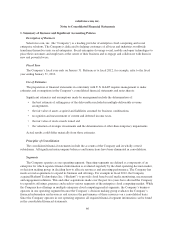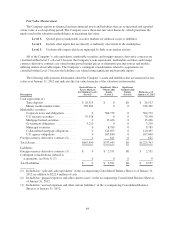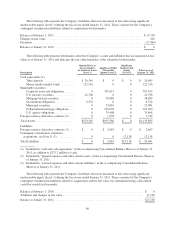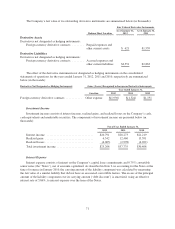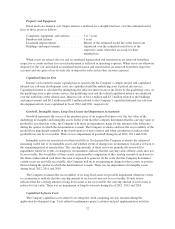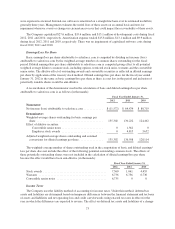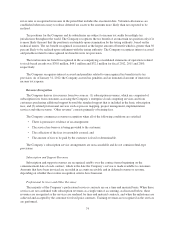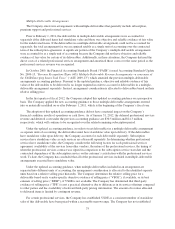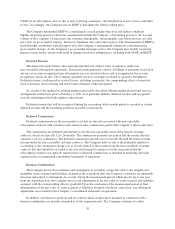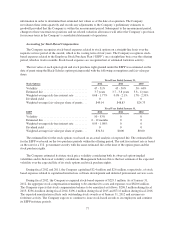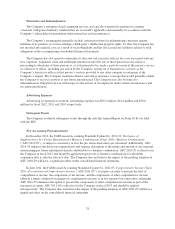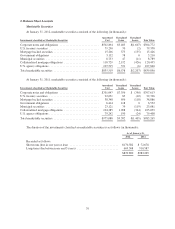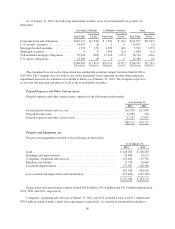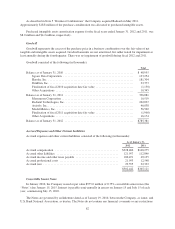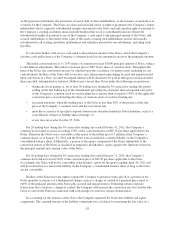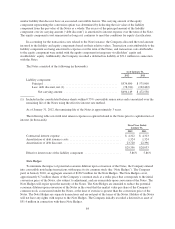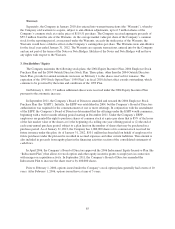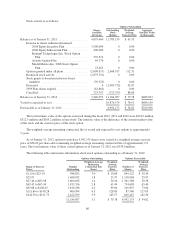Salesforce.com 2012 Annual Report Download - page 80
Download and view the complete annual report
Please find page 80 of the 2012 Salesforce.com annual report below. You can navigate through the pages in the report by either clicking on the pages listed below, or by using the keyword search tool below to find specific information within the annual report.VSOE for its subscription services due to lack of pricing consistency, the introduction of new services and other
factors. Accordingly, the Company uses its BESP to determine the relative selling price.
The Company determined BESP by considering its overall pricing objectives and market conditions.
Significant pricing practices taken into consideration include the Company’s discounting practices, the size and
volume of the Company’s transactions, the customer demographic, the geographic area where services are sold,
price lists, its go-to-market strategy, historical standalone sales and contract prices. The determination of BESP is
made through consultation with and approval by the Company’s management, taking into consideration the
go-to-market strategy. As the Company’s go-to-market strategies evolve, the Company may modify its pricing
practices in the future, which could result in changes in relative selling prices, including both VSOE and BESP.
Deferred Revenue
The deferred revenue balance does not represent the total contract value of annual or multi-year,
non-cancelable subscription agreements. Deferred revenue primarily consists of billings or payments received in
advance of revenue recognition from subscription services described above and is recognized as the revenue
recognition criteria are met. The Company generally invoices customers in annual or quarterly installments.
Deferred revenue is influenced by several factors, including seasonality, the compounding effects of renewals,
invoice duration, invoice timing and new business linearity within the quarter.
As a result of the updated accounting guidance previously described, billings against professional services
arrangements entered into prior to February 1, 2011 were generally added to deferred revenue and recognized
over the remaining related subscription contract term.
Deferred revenue that will be recognized during the succeeding twelve month period is recorded as current
deferred revenue and the remaining portion is recorded as noncurrent.
Deferred Commissions
Deferred commissions are the incremental costs that are directly associated with non-cancelable
subscription contracts with customers and consist of sales commissions paid to the Company’s direct sales force.
The commissions are deferred and amortized over the non-cancelable terms of the related customer
contracts, which are typically 12 to 24 months. The commission payments are paid in full the month after the
customer’s service commences. The deferred commission amounts are recoverable through the future revenue
streams under the non-cancelable customer contracts. The Company believes this is the preferable method of
accounting as the commission charges are so closely related to the revenue from the non-cancelable customer
contracts that they should be recorded as an asset and charged to expense over the same period that the
subscription revenue is recognized. Amortization of deferred commissions is included in marketing and sales
expense in the accompanying consolidated statements of operations.
Business Combinations
The Company uses its best estimates and assumptions to accurately assign fair value to the tangible and
intangible assets acquired and liabilities assumed at the acquisition date, the Company’s estimates are inherently
uncertain and subject to refinement. As a result, during the measurement period, which may be up to one year
from the acquisition date, the Company may record adjustments to the fair value of assets acquired and liabilities
assumed, with the corresponding offset to goodwill. Upon the conclusion of the measurement period or final
determination of the fair value of assets acquired or liabilities assumed, whichever comes first, any subsequent
adjustments are recorded to the Company’s consolidated statements of operations.
In addition, uncertain tax positions and tax related valuation allowances assumed in connection with a
business combination are initially estimated as of the acquisition date. The Company continues to collect
76


